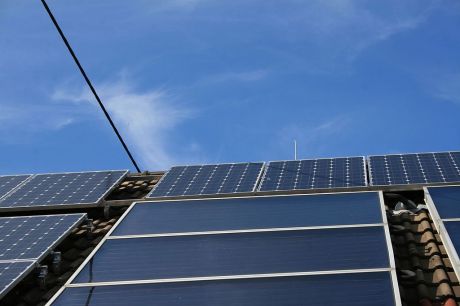High-performance, low-cost concentrated solar power

Combined_heat_and_power_solar_installation_on_barn_roof_in_Western_Europe
By Stefan Thiesen (Own work) [CC BY-SA 3.0 (http://creativecommons.org/licenses/by-sa/3.0)], via Wikimedia Commons
Low efficiency and high electricity costs pose a barrier to widespread implementation of concentrated solar power (CSP) technology. EU-funded researchers introduced novel concepts in the solar receiver design that facilitate the manufacturing process and decrease costs.
Successful implementation of a solar thermal parabolic trough directly
correlates to reduced electricity costs, making CSP plants economically
feasible. Within HITECO (New solar collector concept for high
temperature operation in CSP applications), researchers re-assessed key
components of the technology to find ways of improving performance and
reducing costs.
The project team has developed and tested a new solar receiver with increased efficiency following an increase in operating temperature of the heat transfer fluid to 530 °C. It used molten salt for the process, a fluid widely used as a vector for energy accumulation in current commercial plants with parabolic trough technology. In any case, the device is able to be use with typical heat transfer fluid (HTF) as thermal oil.
HITECO introduces many innovations in the design of the solar absorber tubes, which is one of the key components in CSP technology. On the contrary to the current technology, the new absorber tube is based in a continuous open chamber, with the vacuum level being dynamically controlled allowing a minimal energy losses. In addition, the internal steel tube and its external glass tube are independent from each other, thus eliminating the need for bellows to compensate for the difference in expansion between materials. According to the previous definition, when the steel tube expands, it slides through supporting structures that are placed every 6 m. This internal piece operates just like an isolation system, while simultaneously keeping the tube in the theoretical focal point. The external glass tubes slightly increase in length; however, seal joints – one of the components that comprise the bridle attachment system – absorb the effect.
Researchers also developed new solar selective coatings to be applied to the surface of the internal metallic tube by sputtering. In particular, they performed studies to explore the chemical stability of oxide and nitride cermets for working temperatures near 600 °C. In addition, a new antireflective coating was developed to achieve the optical parameters of the external glass.
With high levels of energy efficiency, CSP could meet up to 11 % of the world's projected power needs by 2050. Simple absorber tube designs that also require fewer components, eliminate getters and reduce welding processes can facilitate the manufacturing process and drive down costs.
published: 2016-02-15

